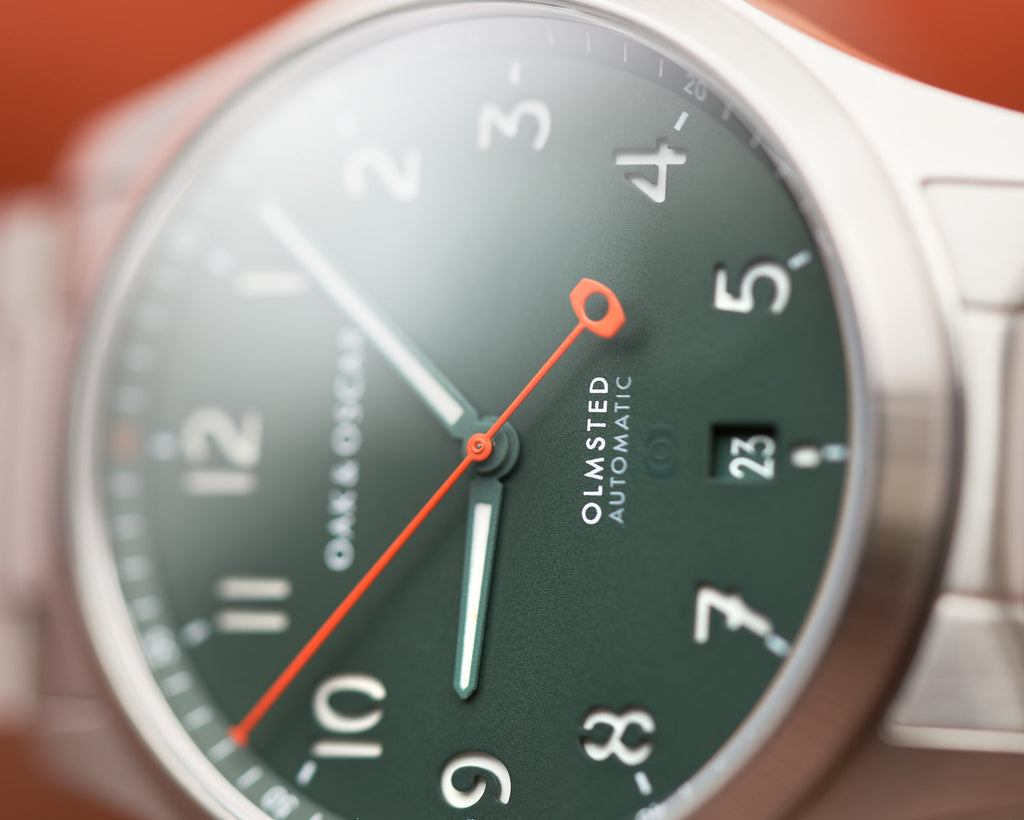Is My Watch On Time? How to Tell if your Watch is Accurate.

Poor timekeeping is one of the main indications that your watch might need a service, but how do you know how well your watch is keeping time?
The answer is both simple and a little complicated, like all questions related to watchmaking.
First off, a mechanical watch is never going to be as absolutely accurate and consistent as a smart phone, or even a quartz watch. Phones track the national coordinated time signal from an atomic clock, and even the cheapest quartz is accurate to a second or less per day. Mechanical watches are, well, mechanical, so there’s variance. And that's part of their charm.
What is an Atomic Clock?
Atomic clocks keep time by counting the vibrations of a Cesium-133 atom, which oscillates billions of times per second. Every 9,192,631770 vibrations equals one second. Compare that to a quartz crystal, which vibrates 32,768 per second, or a mechanical watch's balance (8 vibrations per second) and you can see why it's so much more accurate!
In short: Cesium atoms resonate, or reverberate, at the same known frequency. An atomic clock counts those frequencies and measures them to determine the passing of time.
In shorter: very smart people at the National Institute of Standards and Technology in Boulder, Colorado do the really hard work so you don’t have to.

Now the simple part. Checking your watch against an atomic time signal is as easy as opening up a website. Here in the US of A, time.gov offers an excellent view of domestic (and UTC) times calculated by the National Institute of Standards and Technology (NIST); it’s a page pulled up on watchmakers’ computers all over the country. Set your watch to the second, wear it around for 24 hours, and check it again the next day.
Why wear the watch instead of setting it down? Well, you want to make sure that the time is accurate in the real world, not just in a static position. After all, watches are meant to be worn, not just sit on your nightstand (#BuiltToDiscover).
If everything is ticking properly, your watch should be almost perfectly on-time. Notice that I said almost—ideally your watch will be very slightly fast by a few seconds. We’d rather have your watch run a little fast than slow, so you’ll be more likely to be early than late.
Easy!
Now, what if you’re not in the USA, or don’t wish to use the time signal from the US Naval Observatory? Fair enough, though strangely more complicated.
Canada’s National Research Council (NRC) offers instant time calculations for the country’s time zones. Germany’s Physikalisch-Technische Budensanstalt (PTB) has a web-based clock for Central European Time only, but it’s a fun animation at least, and it can bark at you in rapid robotic German if you’d like.
Japan’s National Institute of Information and Communications (NICT) calculates Japan Standard Time, Coordinated Universal Time, International Atomic Time and your Local Time, which is fascinating because International Atomic Time is pretty rare to see as a raw calculation. Atomic Time is slightly offset from Universal Time because it’s just one half of an equation that also takes Earth’s rotation into account.
Oops, I just made it complicated again. Oh well, you can always just check your phone—that’s always on time!
Feel like your watch isn’t keeping time? Head to our services and care page and we’ll get to the bottom of it!
